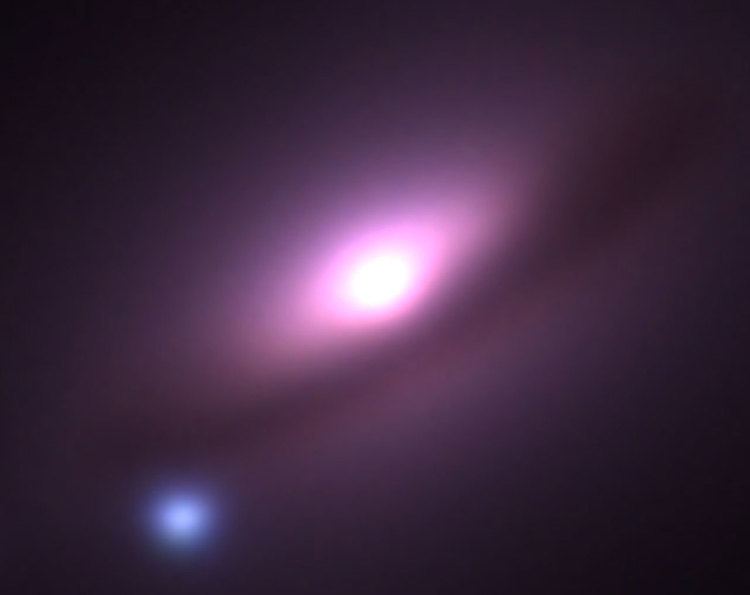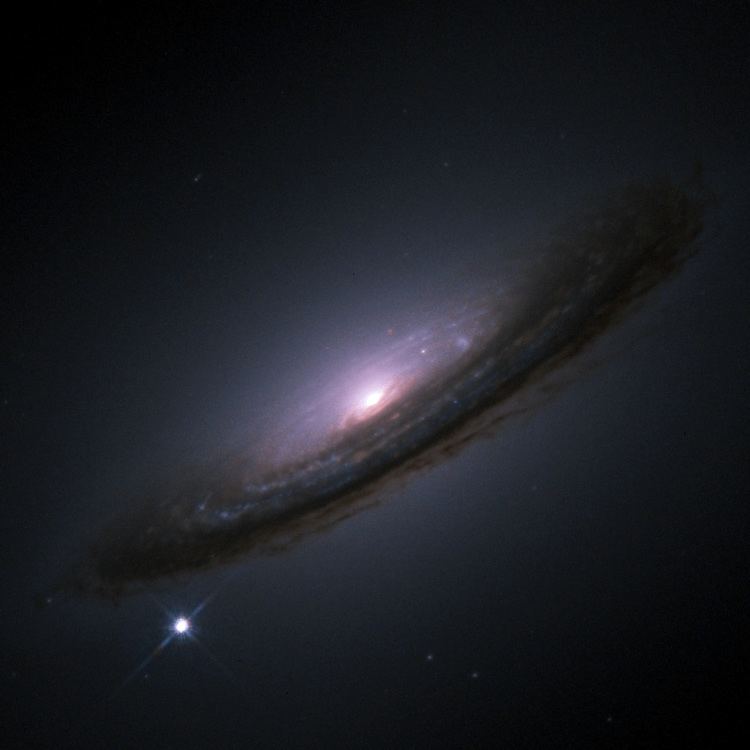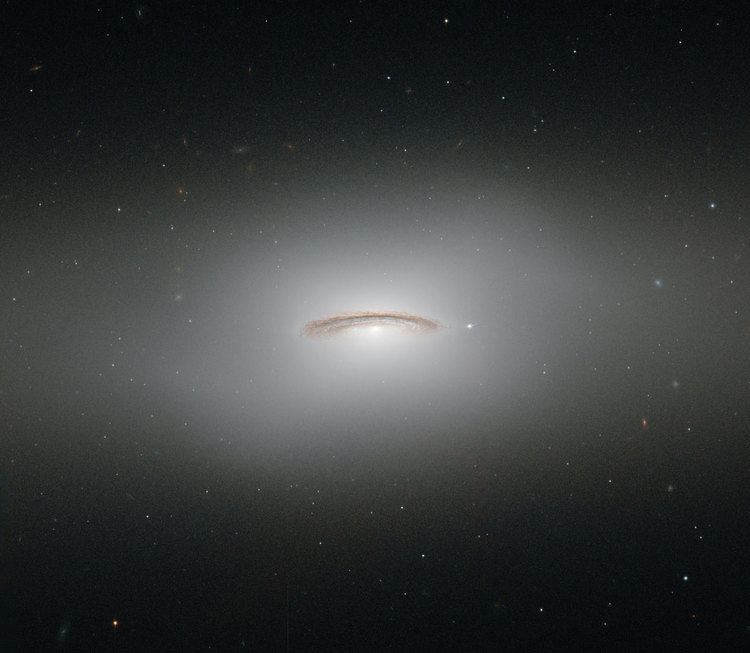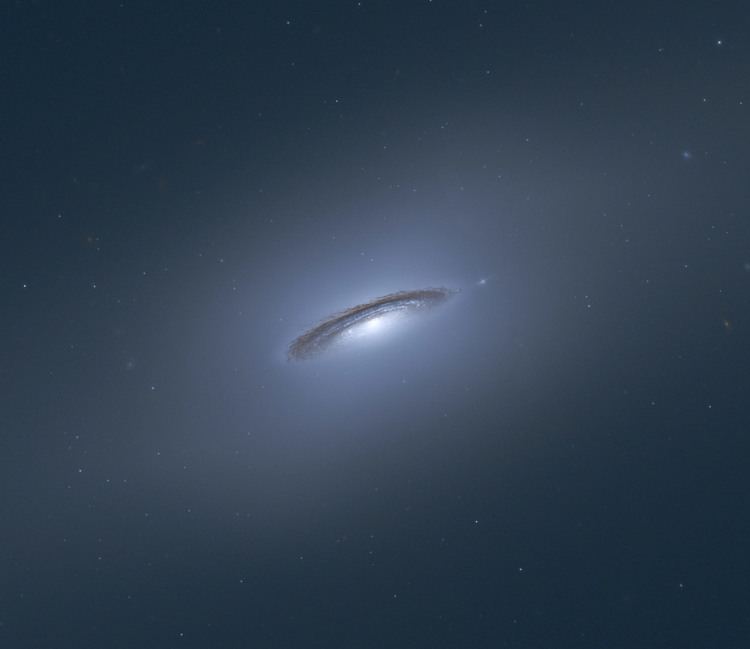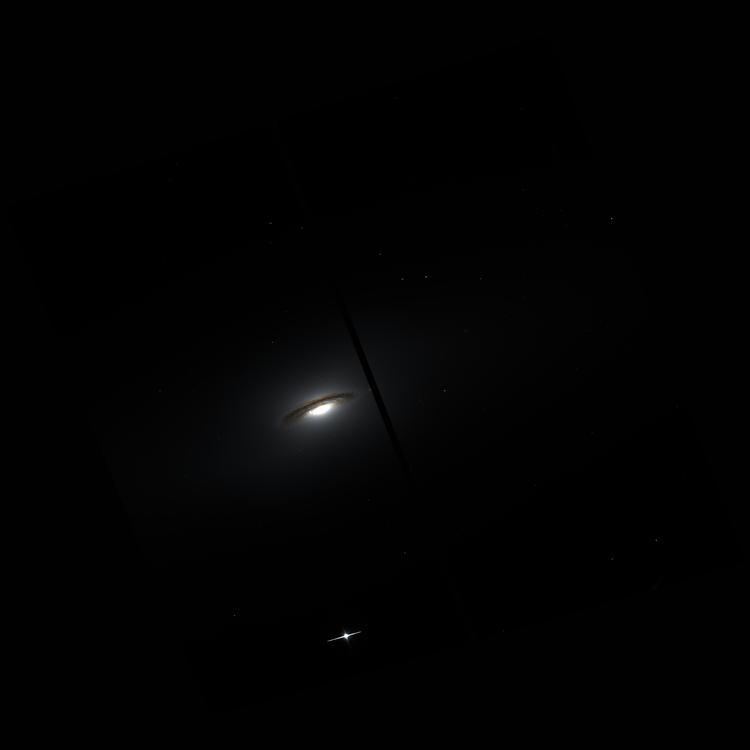Right ascension 12 34 03.029 Type SAB(s)0° | Declination +07° 41′ 56.90″ Magnitude 10.7 Apparent magnitude (V) 10.7 | |
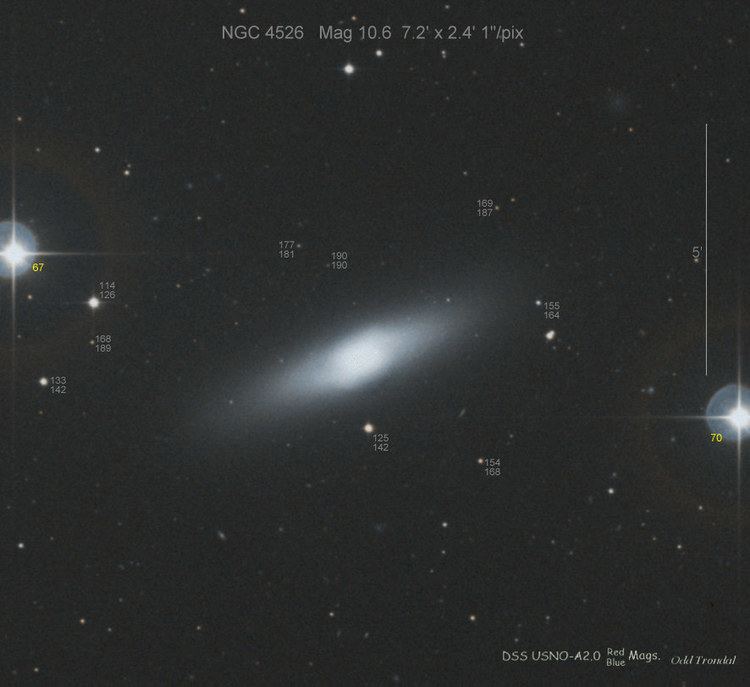 | ||
Redshift 6997149400000000000♠0.001494±0.000027 Helio radial velocity 7005448000000000000♠448±8 km/s Distance 7023520340175991944♠55±5 Mly (7023521479511267955♠16.9±1.6 Mpc) Similar SN 1994D, NGC 4535, NGC 4550, NGC 4536, NGC 4762 | ||
NGC 4526 is a lenticular galaxy in the Virgo constellation that is seen nearly edge-on. The morphological classification is SAB(s)0°, which indicates a lenticular structure with a weak bar across the center and pure spiral arms without a ring. It belongs to the Virgo cluster and is one of the brightest known lenticular galaxies. The inner nucleus of this galaxy displays a rise in stellar orbital motion that indicates the presence of a central dark mass. The best fit model for the motion of molecular gas in the core region suggests there is a supermassive black hole with about 7008450000000000000♠4.5+4.2
−3.0×108 (450 million) times the mass of the Sun. This is the first object to have its black-hole mass estimated by measuring the rotation of gas molecules around its centre with an Astronomical interferometer (in this case the Combined Array for Research in Millimeter-wave Astronomy).
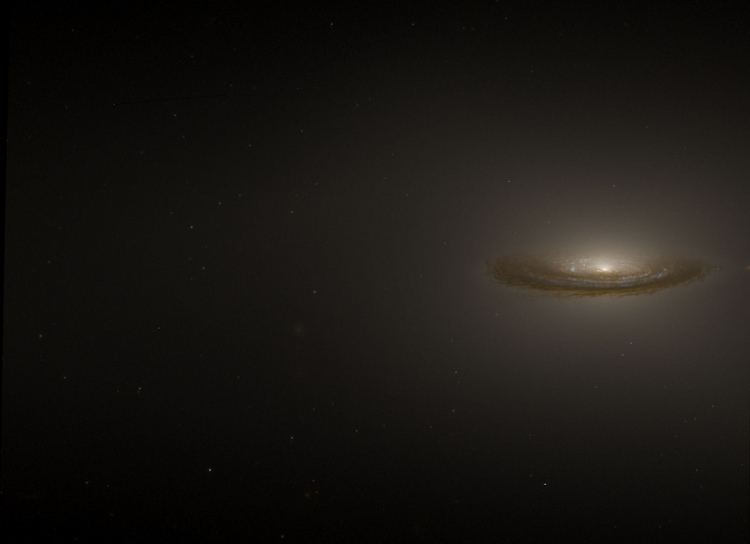
Supernova SN 1969E was discovered in this galaxy in 1969, reaching a peak magnitude of 16. In 1994, a Type 1a supernova was discovered about two weeks before reaching peak brightness. Designated SN 1994D, it was caused by the explosion of a white dwarf star composed of carbon and oxygen.
